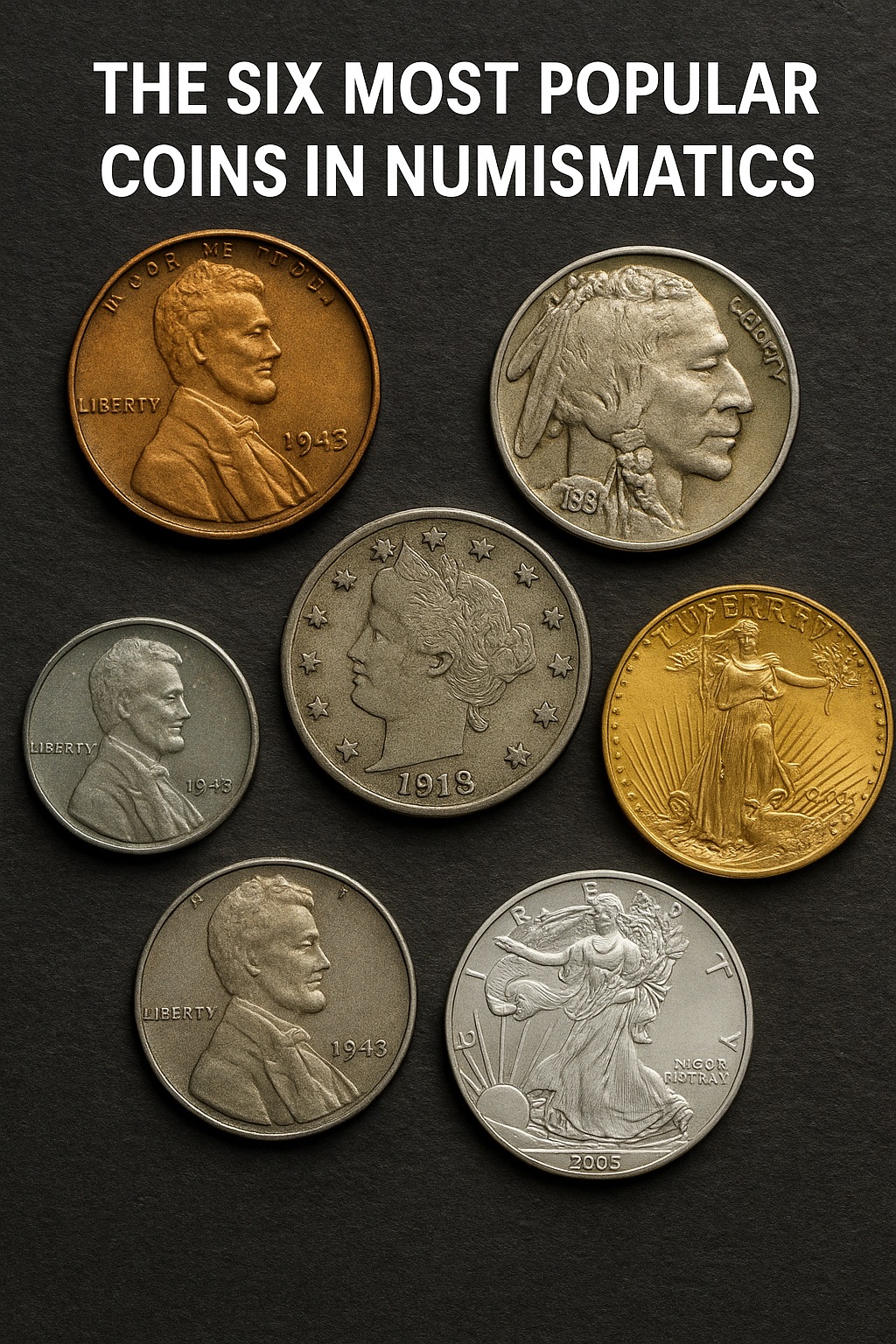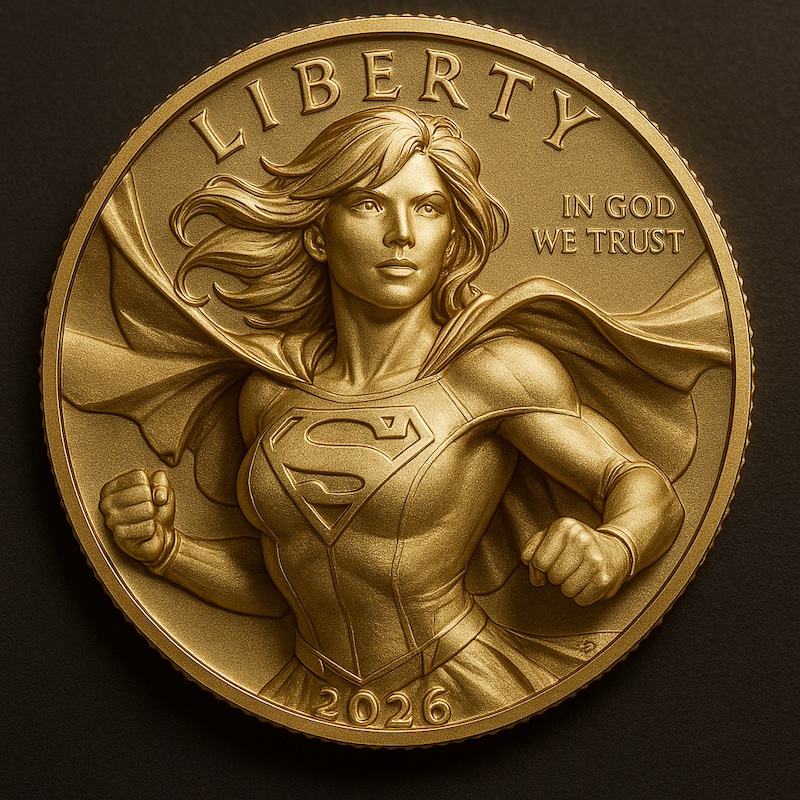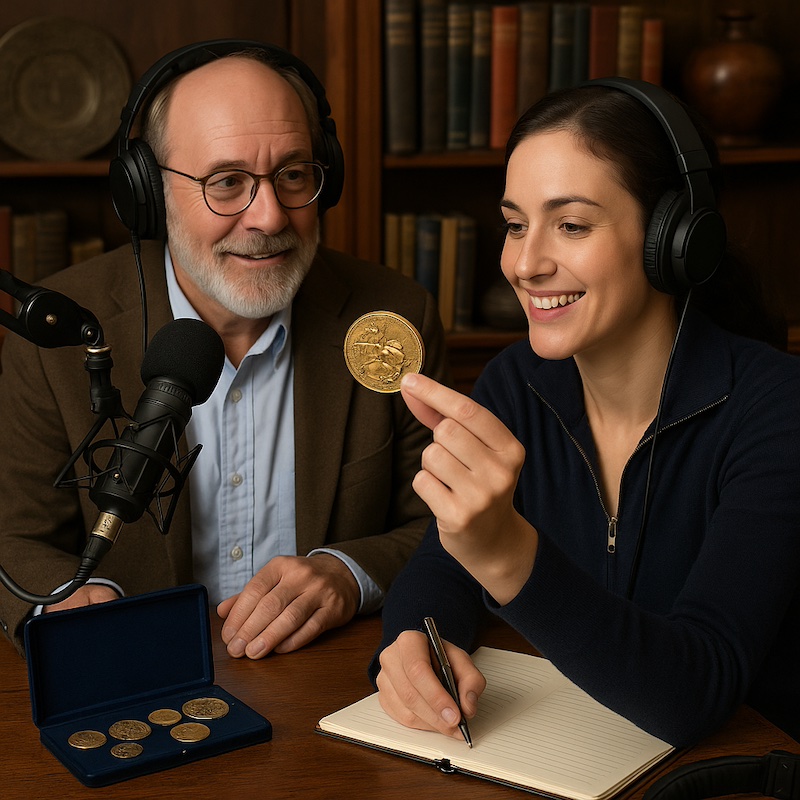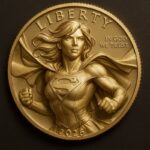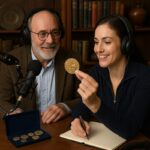TL;DR
From the legendary 1943 Copper Penny to the record-breaking 1933 Saint-Gaudens Double Eagle, America’s most popular coins combine rarity, history, and market value. Learn why these numismatic icons continue to capture collectors’ imaginations—and how technology is reshaping the future of coin investing.
The Timeless Allure of Popular U.S. Coins
For as long as money has existed, collectors have been captivated by its beauty, scarcity, and stories. But in the United States, a select group of coins transcends mere currency to become cultural icons. These coins—sometimes born from error, sometimes from artistry—represent the perfect convergence of history, mystery, and value.
Today, in a numismatic marketplace increasingly shaped by global investment trends and digital innovation, these classic coins remain central to both collectors and investors. Whether it’s the fabled 1943 Copper Lincoln Cent or the forbidden 1933 Saint-Gaudens Double Eagle, their stories illuminate how American coinage has evolved from practical money to collectible art.
Rarity, Error, and Story: What Makes a Coin “Popular”?
Numismatists agree that a coin’s appeal stems from three essential ingredients:
- Rarity – How few exist in the world.
- Narrative – The history, controversy, or legend behind it.
- Design and beauty – The artistry that connects it to a cultural era.
“The coins that captivate us most,” explains veteran numismatist Q. David Bowers, “are the ones that blend human error, political change, or cultural milestones into a tangible piece of history.”
Let’s explore six of the most famous examples that continue to define the American numismatic landscape.
1. The 1943 Copper Lincoln Penny: A Wartime Mistake Turned Million-Dollar Icon
During World War II, copper was urgently needed for ammunition and communications wiring. To conserve metal, the U.S. Mint switched to zinc-coated steel for one-cent coins. However, a few leftover copper planchets were accidentally struck in 1943—creating one of the most famous error coins in history.
Only about 20 genuine copper 1943 cents are known to exist, including one from the Denver Mint that sold for $1.7 million in 2010.
Collectors prize this coin not just for its rarity but its legend. As the story goes, a 14-year-old boy discovered one in circulation in 1944, sparking a nationwide treasure hunt and even rumors of Henry Ford offering a new car for one (a myth, but an enduring one).
Expert Tip: Authentic 1943 copper cents are non-magnetic. Many counterfeits are made by plating steel coins or altering 1945 and 1948 cents.
2. The 1937-D “Three-Legged” Buffalo Nickel: Human Error, Eternal Fame
Minted in Denver, the 1937-D Buffalo Nickel became famous because a mint worker over-polished a damaged reverse die—removing the buffalo’s front right leg.
The result was an unintentional masterpiece. With its unique appearance and low mintage, this “three-legged” variant became one of the most recognizable U.S. error coins.
Even circulated specimens can fetch $1,000 or more, while high-grade Mint State examples exceed $85,000.
Collectors appreciate the coin not just for the mistake but for the beauty of James Earle Fraser’s classic Buffalo design—an enduring symbol of the American frontier.
3. The 1913 Liberty Head Nickel: The Coin That Shouldn’t Exist
Perhaps no coin embodies intrigue and controversy like the 1913 Liberty Head Nickel. Official records show none were authorized, yet five coins mysteriously appeared in the early 20th century—likely struck illicitly by Mint employee Samuel W. Brown.
Each of the five is now named and cataloged: the Eliasberg, Olsen, Walton, McDermott, and Smithsonian specimens.
One of the coins—lost in a family closet for decades—was authenticated in 2003 and sold in 2013 for $3.17 million.
Historical Note: These coins were never officially issued, making them technically illegal to own—except the government has allowed their private ownership due to their extraordinary numismatic significance.
Their mystique, combined with their traceable ownership history (even kings and celebrities owned them), ensures their permanent place in the pantheon of popular U.S. coins.
4. The 1933 Saint-Gaudens Double Eagle: The World’s Most Valuable Coin
If one coin could symbolize the intersection of art, economics, and law, it’s the 1933 Saint-Gaudens Double Eagle.
Struck but never officially issued due to President Franklin Roosevelt’s 1933 executive order ending the gold standard, nearly all of the 445,500 coins were melted down.
Yet a few escaped the Mint illicitly. After years of legal wrangling, the government authorized just one example for private ownership—the famous “Farouk specimen”, named after Egypt’s King Farouk.
That coin sold in 2002 for $7.6 million and again in 2021 for a record $18.87 million, making it the most expensive coin ever sold.
Other surviving examples remain government property and are stored at Fort Knox.
Numismatic Insight: “It’s the perfect storm of beauty, rarity, and legal drama,” notes expert David Tripp. “No other coin captures the American monetary story so completely.”
5. The Morgan Silver Dollar: A Symbol of American Prosperity
Struck from 1878 to 1921, the Morgan Dollar represents America’s Gilded Age and the nation’s westward expansion. Its design by George T. Morgan—featuring Lady Liberty and an eagle—remains a favorite among both collectors and investors.
With high silver content (0.7734 troy ounces), Morgans appeal to bullion investors, while collectors chase key dates like the 1893-S, which can command over $500,000 in Mint State.
Modern interest surged after the U.S. Mint’s 2021 commemorative reissue, uniting new collectors with veterans in what experts call the “Morgan Dollar revival.”
6. The American Silver Eagle: The Modern Bullion Icon
Introduced in 1986, the American Silver Eagle is the official silver bullion coin of the United States. It combines the timeless Walking Liberty design with guaranteed one-ounce .999 fine silver content.
While primarily an investment coin, certain issues—such as the 1995-W Proof Silver Eagle—are highly collectible, often selling for over $10,000.
The Silver Eagle bridges the gap between bullion investment and numismatic passion, symbolizing how modern minting continues to fuel the collecting hobby.
Beyond History: The New Frontier of Coin Collecting
1. Digital Tokenization and Fractional Ownership
In recent years, technology has entered the numismatic world. Blockchain platforms now enable fractional ownership of rare coins, allowing investors to buy shares of multimillion-dollar coins like the 1933 Double Eagle or 1804 Silver Dollar.
Tokenization brings:
- Increased liquidity for high-value coins
- Transparency via blockchain verification
- Accessibility for small investors
Although still emerging, tokenized numismatics could revolutionize coin ownership in the coming decade.
2. Professional Grading and Market Trust
Third-party certification by PCGS or NGC remains a cornerstone of modern coin trading. Coins graded and encapsulated by these authorities command significant premiums and enhance buyer confidence.
According to NGC, professionally graded coins outperform raw coins in resale value by up to 40%, especially for high-end rarities.
Why Popular U.S. Coins Remain So Valuable
The continued dominance of these coins is not accidental. They represent:
- Cultural identity – Each tells a uniquely American story.
- Investment stability – Rare coins have historically outperformed equities during economic uncertainty.
- Emotional connection – Their legends keep the thrill of discovery alive.
As numismatist Jeff Garrett puts it: “Coin collecting isn’t just about value—it’s about owning history you can hold in your hand.”
The Future of Numismatics: Blending Legacy and Innovation
The coin market of 2025 and beyond is poised for transformation. Traditional collecting meets digital accessibility, and history meets innovation. Whether it’s through tokenization, online marketplaces, or digital museum exhibits, the way collectors engage with coins is evolving.
But one truth remains unchanged: the stories behind America’s coins will always be what makes them shine.
FAQs
1. What makes a coin “valuable”?
Value depends on rarity, condition, demand, and historical significance. Coins with minting errors or low mintage are especially sought after.
2. How can I authenticate a rare coin?
Always use third-party grading services like PCGS or NGC. Avoid raw coins from unverified sellers.
3. Are U.S. coins a good investment?
While collectibles can fluctuate, high-grade rare coins have historically offered strong long-term appreciation and portfolio diversification.
4. What’s the difference between bullion and numismatic value?
Bullion value is based on metal content; numismatic value comes from rarity, demand, and historical importance.
5. What’s the future of coin collecting?
Expect greater digital integration, blockchain-based ownership, and globalized markets—making rare coins accessible to more investors.
Conclusion: America’s Coins Tell the Nation’s Story
From the mysterious 1913 Liberty Head Nickel to the modern American Silver Eagle, U.S. coins embody the artistry, history, and innovation of a nation. Each represents a chapter in America’s evolving relationship with money, art, and identity.
For collectors, investors, and historians alike, these coins aren’t just metal—they’re living artifacts that continue to inspire discovery, debate, and enduring value.
